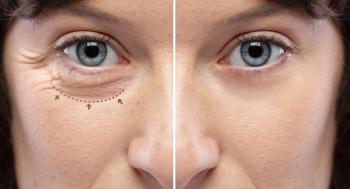
Presbyopia-correcting IOLs next step for refractive surgery
Fewer than 10 years ago I sat in the audience at the first "Array Familiarization Course" offered in San Francisco at the conclusion of the American Academy of Ophthalmology annual meeting. A highlight of the course for me was I. Howard Fine, MD's response to a question about the best refractive procedure for a 60-year-old patient with 6 D of myopia. The first FDA approvals for excimer laser ablation recently had come through, and LASIK was on everyone's mind. Dr. Fine, however, proposed refractive lens exchange with the Array lens, offering complete spectacle independence. The idea clicked.
Very soon after, I became the second surgeon in North Carolina to implant the new Array multifocal IOL (Advanced Medical Optics) (Michael Woodcock, MD, beat me by 1 day). I vividly recall the patient and her genuine satisfaction with the procedure. She had presented for LASIK-a woman in her late 50s who enjoyed Jazzercise and wanted to dance without her glasses.
An underlying theme of the presentation demonstrated the increased risk of doctors who squeeze higher and higher volumes out of their practices in the face of declining compensation. One example portrayed a physician running late, conducting a hurried exam, and then quickly departing with the words "I'm sorry that the insurance company forces me to do it this way." Analysis revealed that the insurance company did not force anyone to do anything; the physician made a choice to maintain revenue despite decreased reimbursement. This decision then necessitated higher daily patient volumes and shorter patient encounters.
Intrinsic, extrinsic rewards
Unfortunately for physicians working for Medicare or commercial insurers, our customers-our patients-do not pay us directly for our services. Increasing their satisfaction may make everyone happier, but it does not allow us to charge a fair price. When Apple Computer increases quality and enthusiastic engineers create better products, Apple can sell the product at market rates to thrilled consumers who tell their friends to buy more.
For industry, working to increase intrinsic rewards leads predictably to increased extrinsic rewards. For physicians under the rigid reimbursement system of Medicare, however, working to increase intrinsic rewards has the opposite effect; it leads predictably to decreased extrinsic rewards.
Newsletter
Don’t miss out—get Ophthalmology Times updates on the latest clinical advancements and expert interviews, straight to your inbox.









































